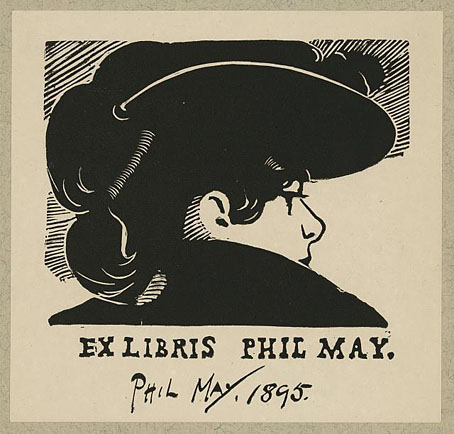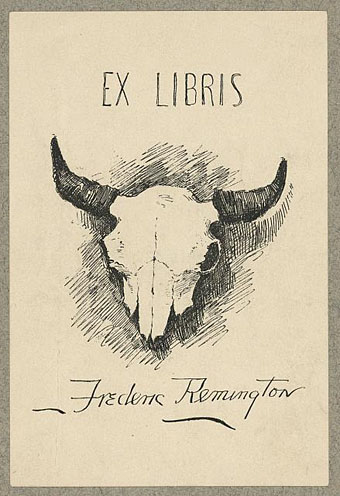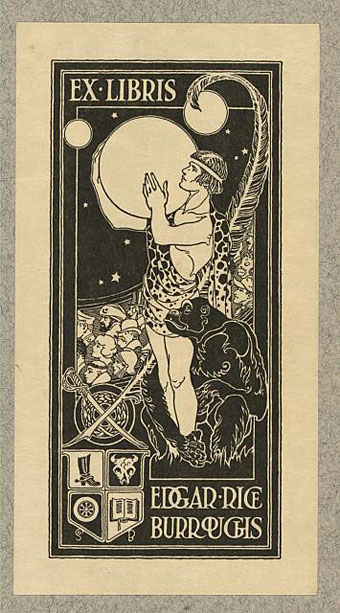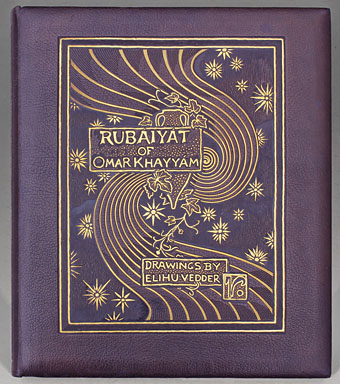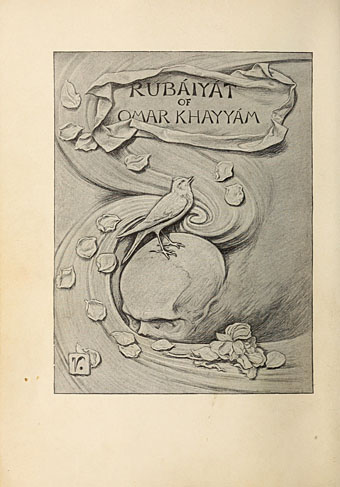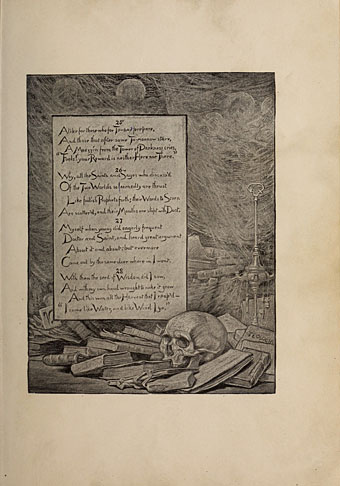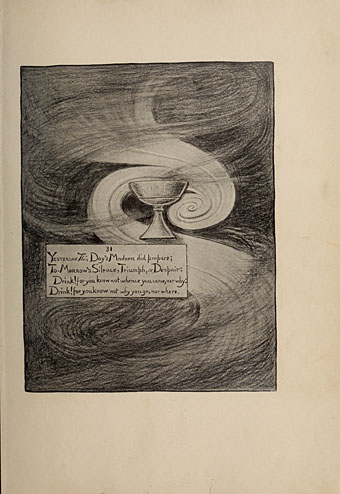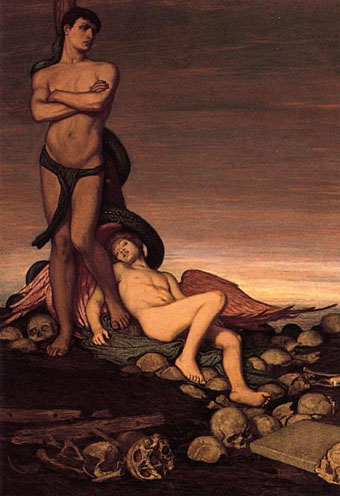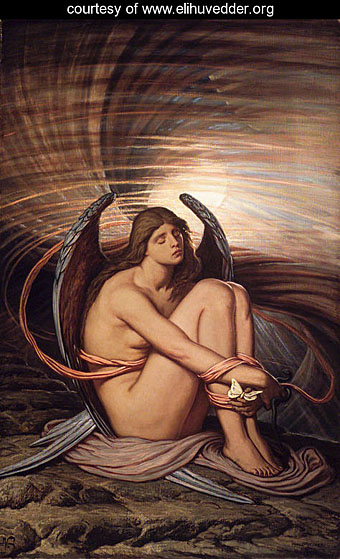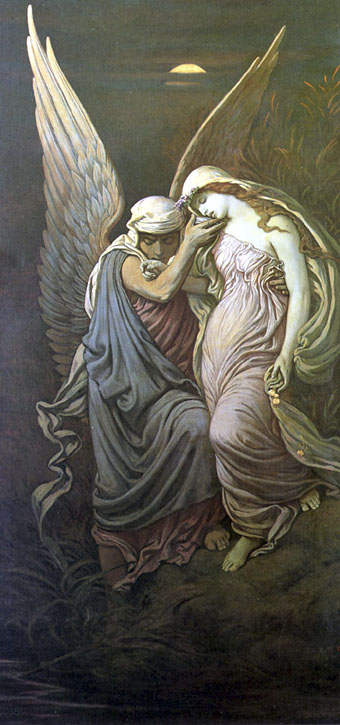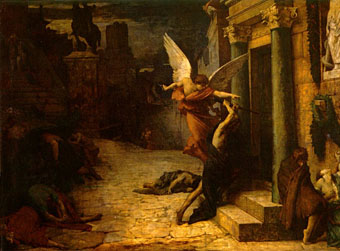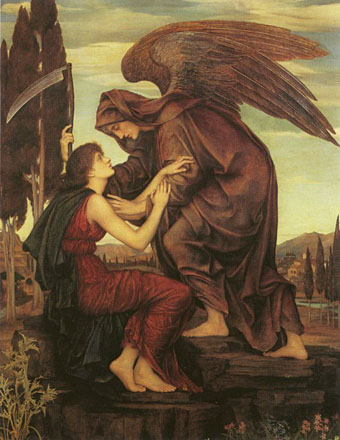Artist: Phil May (1895).
The bookplates housed at the Library of Congress aren’t all available for online viewing which is a shame when their collection includes notable examples such as these. Three of the plates here were designed by the artists whose books they identified; two of the others are for writers—Edgar Rice Burroughs and Jack London—while the sixth one is for Charlie Chaplin. The artists’ plates look like continuations of the work of their creators which makes them less interesting than those of the writers and actor, all three of which say something about the way these men saw themselves reflected in their work: the pantheon of characters from Burroughs’ fiction; Chaplin’s poor boy conquering London; and Jack London’s lone wolf daring you to try to steal his book.
Artist: Frederic Remington (between 1880? and 1909).
Artist: Studley Burroughs (between 1914 and 1922).

